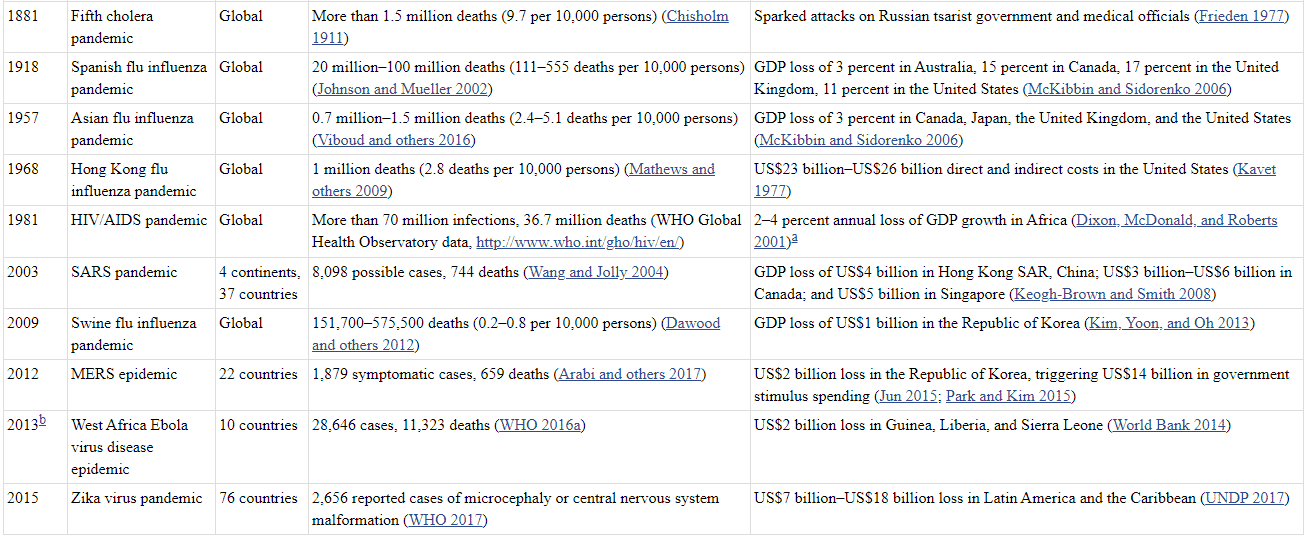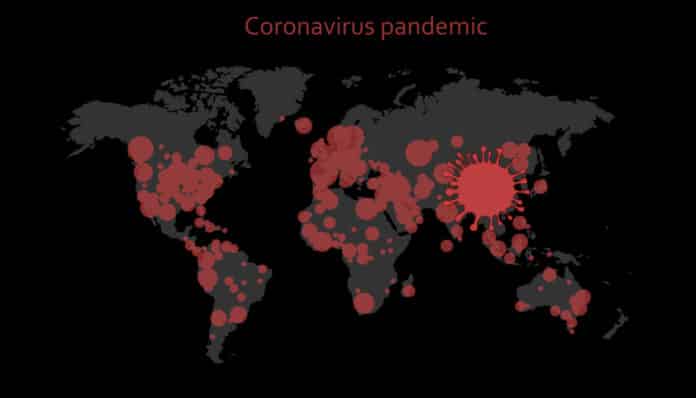Pandemic Warning Signs We missed
Pandemics are large-scale outbreaks of contagious diseases that greatly affect wide geographical regions with greatly increased morbidity and mortality and cause significant social, economic, and political disruption. With the increase of global travel and integration, urbanization, and exploitation of natural resources, pandemics’ likelihood increased over the past century.

Despite repeated warnings and measures from the scientific community to identify and limit emerging outbreaks, today we are in the middle of a pandemic, and ‘vaccine’ or a possible cure for it is “work in progress” after months since last COVID-19 declared as a pandemic in March by WHO. The pandemic has affected 214 countries and territories around the world and 2 international conveyances as of now. This article is about the signs and warnings around us that we have been missing out on or perhaps ignoring:
- Larry Brilliant
A notable epidemiologist, technologist, who previously worked with WHO to successfully eradicate smallpox, warned about future pandemics in his February 2006 TED talk. In a straw poll, 90 percent of epidemiologists predicted a pandemic in the next 1–2 generations, potentially affecting 1 billion people and losing 165 million lives. Brilliant also mentioned that the economic cost of a pandemic at present would exceed and even overshadow the loss of life from the disease itself.
- Laurie Garrett: the pandemic’s prophet
An American science journalist and pandemic expert, and the author of the best-selling book The Coming Plague, described the consequences of viral infections, which unfortunately is relevant now, 13 years later.
- Statement from the Director General, WHO. (2010)
After the H1N1 pandemic period, the Director-General of the World Health Organization (WHO) commented in a press conference that the then H1N1 pandemic turned to be relatively milder. Pandemics are unpredictable and likely to deliver surprises.
- Hollywood and its sci-fi
Contagion, a Steven Soderbergh directed American thriller, depicted a pandemic similar to the present one. The movie is highly realistic and relatable to the viral pandemic, which is unlikely in other science fiction films. The movie was released in 2011 and is doing brisk business now.
- David Quammen
An American science, nature, and travel writer published his book, Spillover: Animal Infections and the Next Human Pandemic, in 2012. The book discussed the possibilities of the potential pandemic in his book through a process that he called as spillover, wherein new diseases would originate in animals and passed on to humans.
- Former US President Barack Obama
After the Ebola outbreak, the former US President warned about a future fatal airborne disease similar to Spanish flu in his speech at NIH (December 2, 2014). He mentioned the measures to be taken to manage a likely outbreak if and when it occurs to see it quickly and isolate and respond to it quickly.
- Bill Gates, co-founder of Microsoft
Bill Gates delivered a TED talk entitled “The next outbreak? We’re not ready.” He mentioned that the 21st-century global catastrophe would not be caused by missiles but by a highly infectious virus, i.e., microbes. He spoke about it again, 20 months later, at the World Economic Forum in Davos, Switzerland, and again at the American Society of Human Genetics conference, in October with Francis Collins, director, NIH, alongside addressing thousands of geneticists.
- Ralph Baric
A veteran coronavirus epidemiologist, the University of Carolina, has warned about the possible outbreak. In 2015 Baric published a paper in the journal Nature Medicine, warning about the SARS-CoV virus’s re-emergence from the viruses circulating in bat populations. This was followed by a paper published in the journal PNAS in 2016 with the repeated warning of coronavirus outbreak.
- Indian Researchers
A team of researchers from the Department of Biotechnology, Punjab University, published a paper in October 2019 about possible threats from next-generation bioweapons. The paper lists the pathogens that are likely to be used as bioweapons, and Coronavirus was mentioned in the list.
- National Intelligence: Worldwide Threat Assessment
In January 2019, issued Worldwide Threat Assessment of the U.S. intelligence community reported that the United States and the world would remain vulnerable to a large-scale outbreak of a contagious disease that could lead to massive death rates and disabilities, affecting the world economy and straining international resources.
- Alex Azar, DHHS Secretary
Alex Azar, DHHS Secretary, at the Biodefense Summit in 2019, made a statement in response to when he was asked about what keeps him awake at night in the biodefense world, he replied a Pandemic flu to be an obvious fear and adds that all his peers shared the same concern. - Federal Emergency Management Agency report
A section contained in National Threat and Hazard Identification and Risk Assessment report, 2019, predicted that a pandemic from a novel virus would lead to medical supplies and accommodation shortage and cause severe economic strain.
- National Center for Medical Intelligence (NCMI)
In late November 2019, a confidential report was issued by the NCMI warning of a contagion sweeping through Wuhan, China, assessed as a possible “cataclysmic” event. According to sources, the report was briefed to the Pentagon, the National Security Council, and the White House.
- Helen Branswell, infectious diseases and global health reporter, STAT
On January 4, four days after China notified WHO about the outbreak, three days after the closure of the Wuhan seafood market, Branswell, STAT, reported unusual pneumonia cases in Wuhan, China. Branswell pointed out the possibility of the outbreak to be traced back to a novel coronavirus.
- Senator Tom Cotton
Tom Cotton, Arkansas Republican Senator, tweeted about emanating deadly virus from China on January 22nd, 2020.
According to a report in the Washington Post, the pandemic threat reports were circulated in January and February by U.S. Intelligence. An official stated that the President might not have expected the present outcome, but many other people in the government expected this; they just couldn’t get the President to take necessary measures.
In India, the first case was confirmed on 30th January, in Thrissur district, Kerala, a student who returned from Wuhan University, China, for vacation. The first confirmed death was reported on 12th March. One day “Janta Curfew” was declared on 22nd March. A nationwide lockdown was imposed from 25th March 2020 till 14 April. As of mid-October of 2020– 38,816,933– cases are reported Globally, causing –1,098,037– deaths. Total reported cases in India till mid-October is –7,309,164–and the pandemic’s death toll in India has reached–111,337.
The coronavirus pandemic has shattered the world, and we can only imagine the after effect today. It is but certain that it brought about some changes that will stick around for a very long time. Hopefully, in the future, we can be more responsible for reading signs lurking around us and avoid Pandemic by responding to warning signs that we missed this time.
Pandemic Warning Signs We missed.



